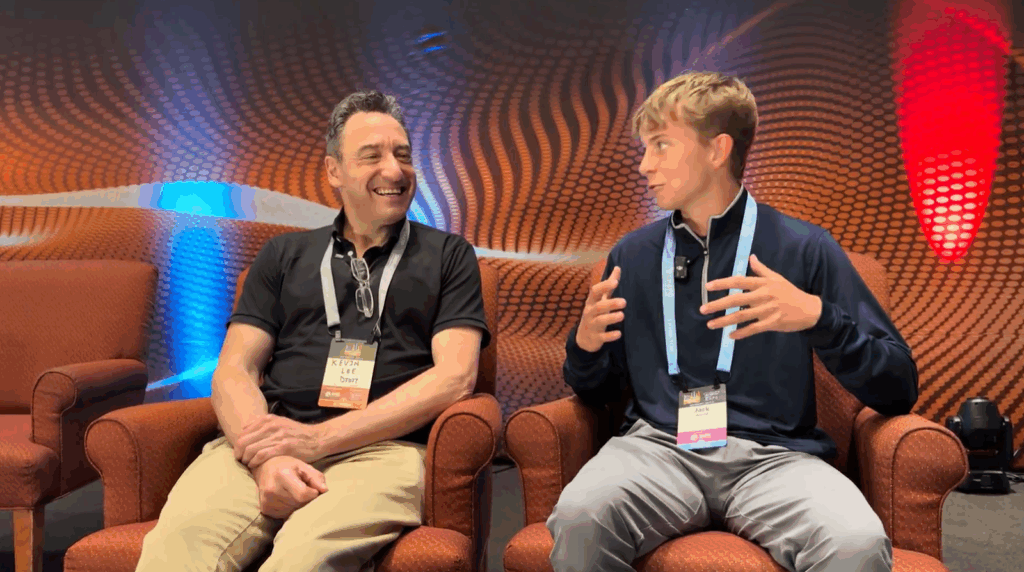Kevin Lee, founder of Didit, and Jack Wendt, founder of Highrise Influence, recently sat down ahead of Kevin’s talk at DigiMarCon Summit. The conversation quickly zeroed in on a timely question:
How should brands think about SEO, visibility, and content when chatbots and AI tools are changing how people search?
The Return of Barnacle SEO
Kevin shared a concept that many marketers have forgotten—barnacle SEO.
“The idea was to get your brand or content attached to reputable sites that already rank,” Kevin explained.
Instead of chasing first-page Google rankings with your own site, barnacle SEO leverages placements in high-authority platforms that are already ranking. It’s a practical way to earn visibility, even if your brand’s domain isn’t the one people click first.
Now, that idea has evolved into something broader: digital PR.
AI tools look for consistency across the web. They gather patterns, not just single sources. So if your brand shows up in multiple places—articles, interviews, third-party mentions—you become part of that pattern. Kevin noted that brands appearing across multiple trusted sources are more likely to be recognized by AI systems.
One way to reinforce authority is through trusted placements. Here’s how to get verified on Google
Visibility in the Age of LLMs
Large Language Models (LLMs) like ChatGPT, Claude, and Google’s Gemini are shifting how people get answers. Kevin explained that these systems reward brands that show up consistently across trusted sources.
“They’re not looking for exact keyword matches,” he said. “They’re triangulating semantically—looking for confirmation from multiple directions.”
For example, if someone asks, “What’s a great conference hotel near the Brooklyn Bridge?”, it’s not enough for a hotel to say so on its site. AI wants to see that echoed in articles, reviews, or podcasts from others.
The brands that win will have their identity reinforced through multi-source content.
Why Repurposing Content Works Better Than Ever
Jack pointed out how this interview itself would be turned into:
- A long-form video
- Blog content (like this)
- Social clips
- Articles syndicated to multiple platforms
Kevin noted that this approach aligns with how LLMs evaluate content:
“LLMs crawl content across formats. They look for reinforcement and breadth,” he said. “If your content appears in multiple trusted formats, it has a better chance of being recognized and ranked.”
This supports the Content Factory method Jack and Dennis Yu teach. Create once, then repurpose in ways that reinforce your brand’s expertise.

The Push for Useful, Authentic Content
Kevin emphasized a major trend shaping all of this: Google’s Helpful Content Update.
“It shows that freshness, authenticity, and usefulness matter more than ever,” he said. “AI regurgitates. What it values is content that isn’t recycled.”
That means interviews, transcribed conversations, real examples, and personal insight are now key ranking factors—not just for Google, but for chatbots, voice search, and AI-driven platforms.
LLMs are pulling from everywhere, not just Google’s index.
Takeaways for Brands
If you’re a brand leader or marketer, here’s what Kevin and Jack’s conversation made clear:
- Barnacle SEO works again. Get cited on sites that already have authority.
- AI cares about consensus. Your brand needs to show up in multiple places, saying the same thing.
- Repurpose everything. Don’t create one-off content. Use it everywhere.
- Collaborate. Use industry relationships to co-create content—this builds reach and credibility.
- Avoid AI junk. LLMs may scrape it, but they don’t trust it.
“We’re practicing what we preach right now,” Jack said as the camera wrapped.
To stay visible in the AI era, brands need consistent, multi-platform presence and authentic content that reinforces their expertise.

